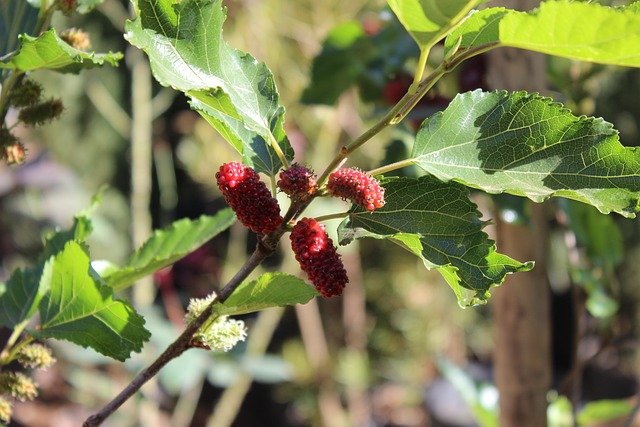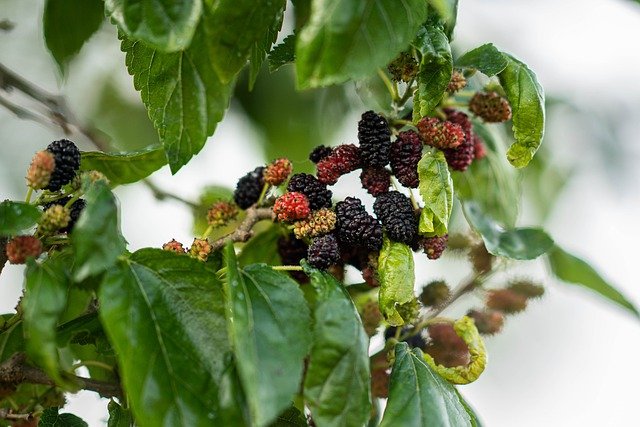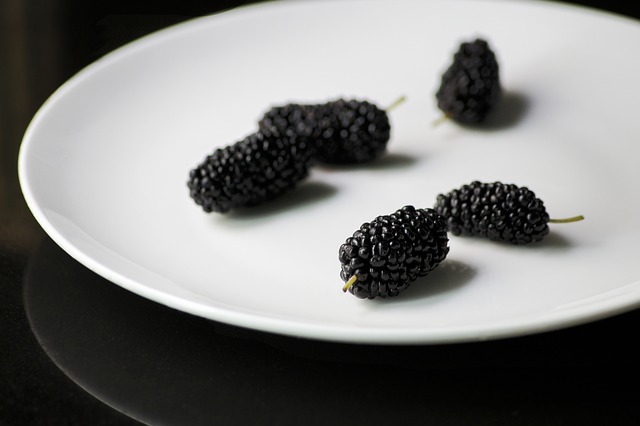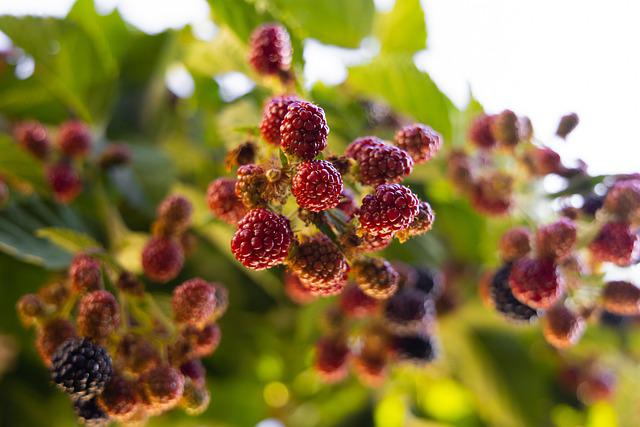When To Harvest Mulberry Leaves?

After sixty to seventy days, leaves may be harvested, but the top leaves must be retained. After 30-45 days after the initial harvest, the leaves may be harvested a second time, with the top leaves again being retained. Mulberry leaves have been linked to reduced blood sugar, cholesterol, and inflammation. Because of these qualities, they may be beneficial in the fight against diabetes and cardiovascular disease. Keep reading!
Table of Contents
Pruning and Harvesting
Pruning is the process of removing specific shoots from a mulberry tree to manage the tree’s shape for harvesting, upkeep, and an increase in leaf yield. Additionally, trimming helps prevent and control pest infestation.
Tools for Mulberry Leaves Harvesting
Equipment and tools that come into direct touch with mulberry leaves must be fabricated from non-contaminated materials. Knives and shears must be sharp and spotless. The containers used to transport mulberry leaves must be clean and unaffected by the quality of the leaves. The collected mulberry leaves must not be placed on the floor directly.
The containers used for harvesting and transporting must be well segregated from those used for garbage and pesticides to prevent contamination.
Pruning to an Industrial Standard
- The tree must be at least 6 months old during its first year of pruning. Depending on agricultural inputs, the environment, and the silkworm raising and mulberry leaf harvesting plan, pruning should be performed five times.
- Once a year, at the beginning of the production season, the base of the mulberry tree is cut 25 to 50 centimeters above the ground to prepare the plant for the first harvest.
- After 60 to 70 days of cutting the base, the middle will be chopped 80 to 100 centimeters above the ground. The healthy leaves will be harvested for consumption.
- The third and final cutting will occur 60 to 70 days following the middle cutting. The shootlet will be sliced 5 to 10 cm above the middle cut. The healthy leaves will be harvested for consumption.
- The second shootlet cutting will be performed 60 to 70 days following the initial shootlet cutting. The shootlet will be trimmed approximately 5-10 cm above the initial shootlet. The healthy leaves will be harvested for consumption.
- Fifth time: 60-70 days following the second shootlet cutting, the third shootlet cutting will be performed. The shootlet will be trimmed approximately 5-10 cm above the second shootlet. The healthy leaves will be harvested for consumption. The initial harvest will be repeated during the subsequent crop year.
Pruning on a Domestic Scale
The tree must be at least 6 months old during its first year of pruning. From the second-year forward, the tree will be harvested five times and pruned twice per year in the following manner:
- The base of the mulberry tree is chopped between 25 and 50 centimeters above the ground. After sixty to seventy days, leaves may be harvested, but the top leaves must be retained. After 30-45 days after the initial harvest, the leaves may be harvested a second time, with the top leaves again being retained. The third harvest will occur 30-45 days after the second harvest.
- The middle cutting height is 80-100 cm above the ground following the third harvest. The fourth harvest will occur 40 to 45 days following the third harvest. For the fifth harvest, leaves shall be gathered at the same interval as the second and third harvests, and the top leaves shall be retained. The initial harvest will be repeated during the subsequent crop year.
Use of Mulberry Leaves

Silkworm Rearing
The baby silkworm consumes the first to third unfolded mulberry leaves from the top stalk as its initial meal, followed by the subsequent leaves from the top down.
The mature silkworm should be fed the entire stem or mature leaves, excluding the top leaves.
Consumable Mulberry Leaf
To prevent the leaves from wilting, mulberry leaves should be collected in the morning or evening during periods of low temperature. The leaves that show no signs of disease, insect, or soil damage must be harvested. Besides the top leaves, harvesting shall consist of picking from the bottom to the top.
Care must be taken when harvesting, storing, and transferring mulberry leaves in the field to preserve leaf quality. Appropriate equipment and instruments must be utilized to minimize the bruising and discoloration of mulberry leaves.
The location for holding and collecting mulberry leaves in the field must be equipped with clean containers to prevent contamination from pests, microorganisms, garbage, soil, dirt, or other dangerous substances. In addition, they must not damage the mulberry leaves and be able to shield them from heat and sunlight.
After leaf harvesting, care must be taken to prevent heat accumulation from causing bruising, drying, or withering. For instance, mulberry leaves should not be harvested in direct sunlight.
The collected leaves must be placed down loosely, not too densely, with spaces in between to release heat and then covered with a cloth saturated with clean water to prevent water loss.
Health Benefits of Mulberry Leaves
Eating mulberry leaves may reduce inflammation, blood sugar, and cholesterol. These characteristics may be useful in the fight against heart disease and diabetes.
This treatment may lower sugar and insulin levels. Several compounds found in mulberry leaves may be useful in the fight against diabetes.
Carbohydrate absorption is prevented by 1-deoxynojirimycin (DNJ).
Aside from lowering high blood sugar and insulin levels, these leaves may also have other health benefits.

A starchy powder called maltodextrin, which raises blood sugar levels quickly, was given to 37 healthy adults in one study. Mulberry leaf extract was then given to the participants, which contained 5 percent of the drug DNJ.
Compared to the placebo group, those who took either 250 mg or 500 mg of the extract saw significantly lower blood sugar and insulin levels.
When people with type 2 diabetes were given 1,000mg of mulberry leaf extract three times daily, their post-meal blood sugar levels were significantly lower than when they received a placebo.
Promote Healthy Heart
Cutting cholesterol and blood pressure, decreasing inflammation, and preventing atherosclerosis—the buildup of plaque in your blood vessels that can lead to heart disease—is a benefits of mulberry leaf extract.
People with high cholesterol received 280 mg of mulberry leaf supplements three times daily as part of a clinical trial. They saw a 5.6% decrease in LDL (bad cholesterol) and a 19.7% increase in HDL (good cholesterol) after 12 weeks of treatment.
Study participants with high triglycerides who took mulberry leaf supplements with 36 mg of DNJ every day for 12 weeks saw their levels fall by 50 mg/dL.
According to animal studies, this leaf may also prevent atherosclerosis, reduce cell damage, and lower blood pressure, which are risk factors for heart disease.
Lessen Inflammation
Flavonoid antioxidants are among the anti-inflammatory compounds found in the mulberry leaf.
According to some research, inflammation and oxidative stress are linked to chronic diseases that may be combated by mulberry leaf.
Supplements derived from this leaf have been shown to reduce inflammatory markers like C-reactive protein, and oxidative stress markers like superoxide dismutase in studies in mice fed a high-fat diet.
Mulberry leaf and tea extracts reduced inflammatory proteins in human white blood cells and significantly reduced DNA damage caused by oxidative stress.
Other Health Benefits but Needs Further Research
Mulberry leaf may have several other health benefits that haven’t been thoroughly researched. These are just a few examples:
- Anticancer properties– The anticancer properties of this leaf have been linked to human cervical and liver cancer cells in some laboratory studies.
- Healthy Liver-Mulberry leaf extract has been shown to protect liver cells from damage and reduce inflammation in animal and in vitro studies.
- Weight Reduction– These leaves have been shown to increase fat burning and aid in weight loss in rodent studies.
- Consistent skin tone– According to some laboratory research, Mulberry leaf extract may help prevent hyperpigmentation or dark skin patches and naturally lighten skin tone.

